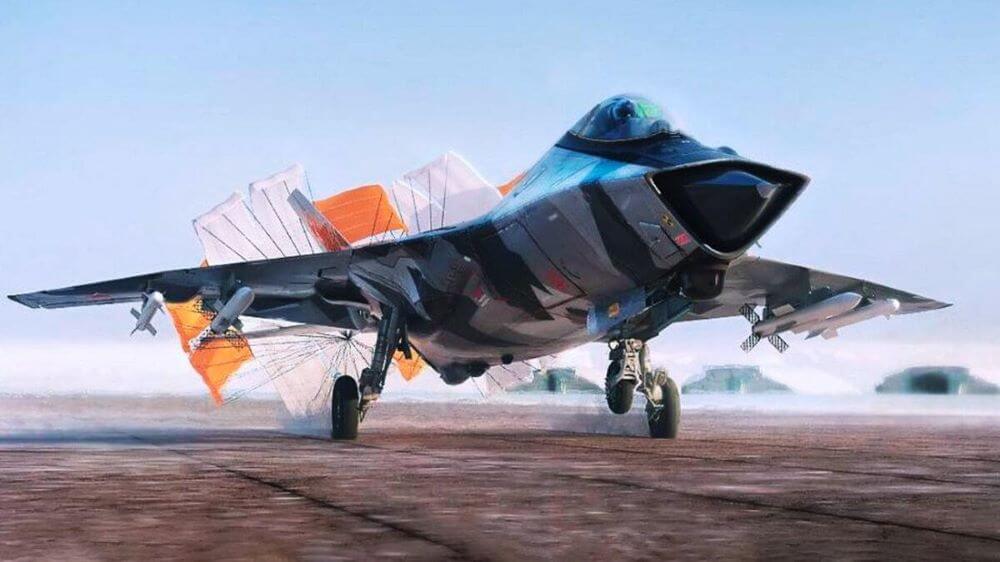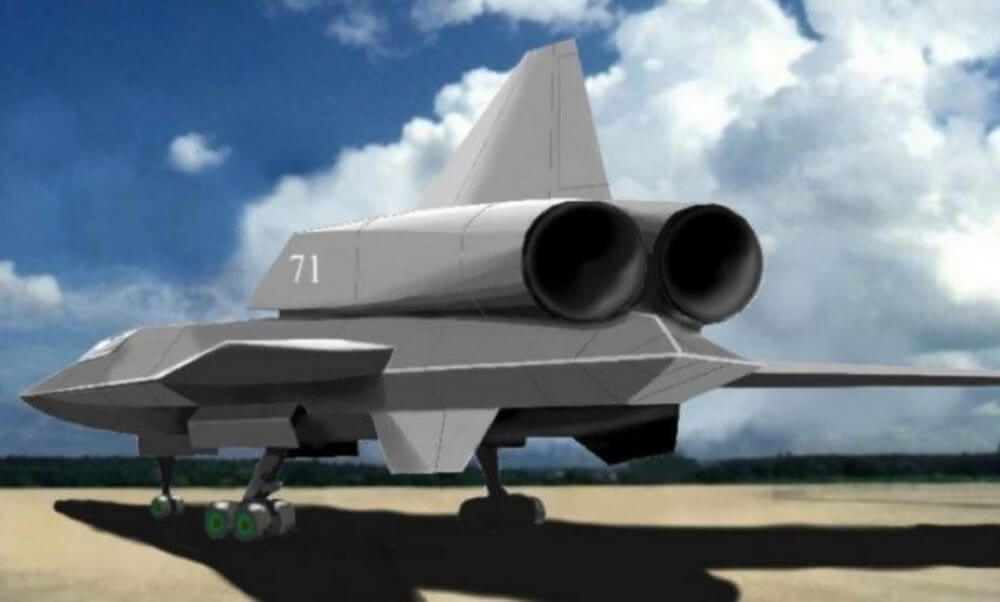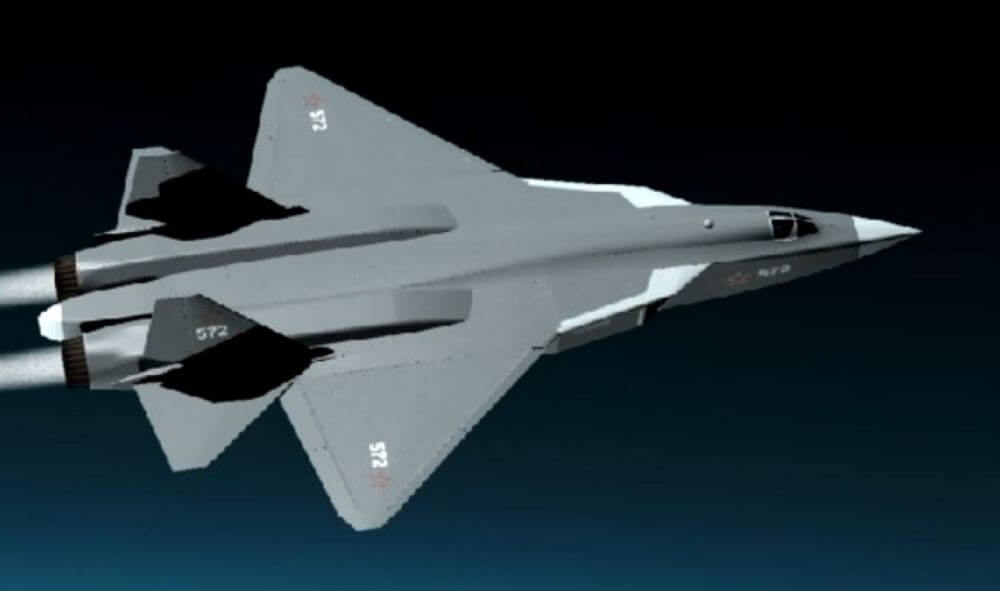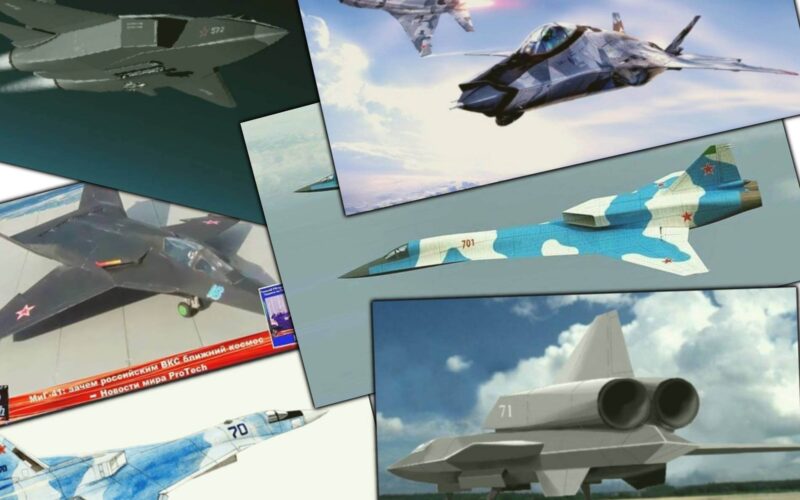New tensions, new projects
Russia had little need, and even less resources for new interceptors in the 90s and the 2000s. But on the verge of 2010s, the situation started changing, and the country turned towards investing large money into its defense industry once again.
In April 2013 there was a prominent hearing in the State Duma, the lower chamber of the Russian parliament. It was solely dedicated to the question of the MiG-31.
According to the information presented, over 30% of Russian airspace was no longer controlled by the country’s Air Force. Areas that needed coverage were mostly in the Far East, and with the rising tensions in the Arctic – in the north. Long-range interceptors are a perfect fit for those gaps, but of roughly 500 MiG-31s manufactured, less than 120 were operational.
With a bit of investment, this number could be raised to 300, and titanium airframes of existing MiGs showed no signs of ageing. Furthermore, all the facilities to resume manufacturing of Foxhounds were still in place.
So, there were three possible solutions to the “30% hole in the airspace” problem: to start making new MiGs in the old mold, to modernize existing ones, or to come up with something completely new. Victor Bondarev, Commander-in-chief of the Air Force, strongly defended the third option. But it was rejected in favour of the first two.
Since then, the fleet of MiG-31s was refurbished, expanded, and brought to the level prepared back in the 80s: with R-37s and anti-satellite rockets. Nevertheless, despite the rejection of Bondarev’s idea, there are all assumptions to consider this hearing as the beginning of the story of the MiG-41. Not only was it the first time the question of a new Russian heavy interceptor was raised in public, but it also kick-started the search of previously abandoned ideas within Russia’s infosphere.
In August 2014 Bondarev came out with a statement that the Air Force was conducting research into MiG-31’s replacement: the PAK DP program. According to the presented timeline, the development should start in 2017, and the first aircraft should be delivered in 2025. By 2028, the entire fleet of MiG-31s should be replaced.
At the same time the name, MiG-41, started circulating in the media. Its first mentions can be tracked back to 2010, when images of a futuristic airplane, insired by the MiG-21 and created by Ukrainian artist Alexander Yartsev, were posted. Those images later got shared by everyone from bloggers to professional media outlets, despite having no relation to the actual MiG-41.
This number, as a proper name for the PAK DP, was first mentioned in mid-2014 by a Russian member of parliament Alexander Tarnaev. He also explained that the new aircraft is going to be a deeply modernized version of MiG-31, and mentioned nothing in regards to performance.
To clarify Tarnaev’s remarks, Russian media turned to Anatoly Kovchiur – a prominent public persona and a famous test pilot. His comments about the MiG-41 were used and reused by almost all outlets at the time, and cemented the image of the new airplane.
Kovchiur said that the successor to the MiG-31, announced by Tarnaev, was long-overdue. It also can’t be just an upgrade to the Foxhound: the plane has to be new, better and faster. It has to have a speed of at least Mach 4. According to some journalists, that was because American SR-71 could do Mach 3.2, and the Russian answer to it could not be inferior.
The fact that the SR-71 was retired for almost two decades and that there was no official announcement about Mach 4 abilities of the PAK DP did not bother anyone. Thanks to Tarnaev, PAK DP turned into the MiG-41. Thanks to Kovchiur, it became a Mach 4 plane.

One of many images of a fictional airplane named MiG-41, made at least three years before the official start of the PAK DP program (Image: Alexander Yartsev)
A flight into science fiction
As 2017 and the beginning of the development of the new plane neared, official announcements got even scarcer, so, naturally, rumors had to be amplified.
For Russian media, Kovchiur’s “should be” became a “will be”: MiG-41 is going to be a hypersonic stealth fighter jet, because all fighter jets nowadays are stealth, and because one expert said that it has to be very fast.
Bondarev was another misinterpreted source of information, coming out with several new statements. In late 2017 he said that PAK DP will have an operational range of up to 1,500 kilometers and use R-37 as its main armament, along with some other, yet undeveloped missile. He also claimed that the plane was going to be “the fastest fighter jet in the world”, which the media, once again, quickly translated into “hypersonic”.
Possibly the most widely-quoted snippet came from the chief engineer of United Aircraft Corporation (UAC) Sergey Korotkov, who said that the start of the development got delayed to 2018, and joked about the company’s willingness to follow instructions from politicians: “If they say “into space”, we will do “into space”. For journalists, this joke signified that the MiG-41 will definitely be a spaceplane.
The only information that was not exaggerated came in 2017 from the chief designer of MiG, Ilya Tarasenko, who said that the start of the development got delayed to 2018, and that in the future the plane could be modified to perform unmanned missions.
So, through a combination of real information, exaggerations and speculation, an image of the MiG-41 formed. It had to be a hypersonic, optionally unmanned, stealth airplane capable of reaching at least orbital altitudes, if not orbital speeds. Of all this information, the only real facts were an unmanned variant, a range of 1,500 kilometers, the armament of late MiG-31, and the start of the development in 2018. The “into space” remark could be interpreted as a possibility of anti-satellite armament, a capability already present in the MiG-31. Notably, the name “MiG-41” was never mentioned by any military official or a person connected to MiG. It was used only by journalists, politicians like Tarnaev, and experts like Kovchiur.

A low-quality painting of the Type 301/321, often presented as a concept art of MiG-41
A look back
Two more peculiarities of the public image of the MiG-41 have to be addressed. One of them is its actual image. There were no official blueprints, visualizations or mockups, but some kind of illustration had to appear in the news anyway.
The Sci-Fi MiG-41 designed by Yartsev in 2010 was used where possible, and as the artist admitted to AeroTime, his inbox got flooded with requests to make more renders and blueprints. But the MiG-21-inspired plane was clearly not a heavy fighter, and images were way too dramatic to be official visualizations of a real military project.
Renders of Soviet-era Type 301 and Type 7.01 were omnipresent though, thanks to the Russian community of aviation enthusiasts who were creating a constant stream of art from an alternate reality where the Soviet Union never collapsed. Those renders nowadays illustrate almost all information about the MiG-41 in unofficial sources.
The connection with Soviet-era projects was also kept by the Russian media, as it loved to mention that plans to replace the MiG-31 were already there in the 80s. In many articles written between 2013 and 2020 the unrealized project was also described as hypersonic, doubtlessly mixing the Type 301/321 and the Type 7.01 into one. Although those projects borrowed from each other heavily, they were quite divergent though, with the main difference being the lack of ambitious hypersonic engines on the 7.01, the program that actually was on track to replace the Foxhound.

Another, MiG-31 inspired attempt at guessing the look of PAK DP. This image first appeared in 2017 and quickly became so ubiquitous, tracing is source nowadays is hardy possible.
No official statement ever mentioned that the PAK DP is going to be a resurrected Soviet-era project, or that it is going to have any connection to any previous airplane except for the MiG-31. Yet the speculation about the hypersonic capability of the MiG-41 is deeply rooted in the misunderstanding of abandoned Soviet projects, first popularized by Kovchiur’s statements from 2014.
Neither hypersonic, nor Mach 4 capability was present in official statements too. There is absolutely no information about the development of the ambitious turbojet/ramjet engine envisioned for the Type 301/321, and there is a good indication that such an engine would be completely unnecessary – with the M-37 now fully developed and in at least limited use, PAK DP would have a capability to intercept targets at higher velocities and longer distances than ever before. Also, the idea that speed is the most important feature of a fighter jet was abandoned back in the 70s, as proven by every subsequent new development. Interceptors simply don’t need to be that fast anymore.
So, what will it be?
It is very doubtful the MiG-41 is going to be called MiG-41, not unless the military will choose to bend to the public’s will and accept the popular name.
There are some indications that it won’t. Rostec, UAC’s parent company, is distancing itself from the name already. Their initial misunderstood press release from January 22, 2020, said that the PAK DP is hypothetically called “MiG-41”. The release later got redacted to remove the name, and leave only the designation of the project.
Its hypersonic and space fairing capabilities are also quite improbable, which leaves us with the unmanned capability, the range of 1,500 kilometers and the hypersonic armament. There is also the question of it being Russia’s fighter jet of the 6th generation, a topic that requires a deep dive of its own.
If we want to be precise, the generation of a fighter jet is little more than an arbitrary number, used by manufacturers, journalists and pundits to boast about the might of their respective country. MiG-41 is no exception, with Russians designating it as either generation 5++ or 6, and never explaining what this means.
Recently, with the NGAD, the Tempest, the FCAS and the F-X, the outline of the next step in fighter jet design is starting to become clear. And MiG-41, as it is advertised, does not fit into that outline at all.
The core principle of American, European and Japanese programs is the integration of Artificial Intelligence (AI), heavy use of support drones (loyal wingmen) and functioning within a system of systems. The heavyweight MiG-41, a supersonic lone wolf with a mission of being a glorified air-to-air missile delivery platform, sticks out like a sore thumb.
There was quite an emphasis on unmanned operations though, expressed in the mid-2010s as a promise to make a dedicated, remote-controlled variant. It was made at the exact time when this seemed like a great idea for the 6th generation – the F/A-XX program, which reached its peak at the same time, was built on the same premise. The unmanned variant was pretty much the only difference from the 5th generation for the proposed American next-gen airplane, up until requirements were changed in 2014.
So, the claim of the 6th generation is a bogus one, but to be honest, PAK DP does not really need things like loyal wingmen. From the inception in 2013, and even from the roots in the 80s, it was supposed to plug gaps in air defense with its powerful radar and fast missiles, and it is exactly what this aircraft is likely to do.
Therefore, it is unlikely to be very different from the MiG-31 in every visible aspect, be it technical characteristics, armament, or even appearance.
So, when will it be?
The January 2021 news about the start of the development was a misunderstanding. The same thing was reported several times already – notably in 2018 and in 2017. It was quite likely that approximately at that time the research had ended, and the true development had begun.
We can even say that the development began in 2013, when the research into the project was initiated. Surely, it was a different phase, yet the work on the plane started then and there.
The initial timeline promised a prototype before 2020, and the mass-produced plane in 2025. It is uncommon for such programs to be on time, and since the start of the development-proper got delayed for a year, it is only normal that the maiden flight gets pushed back by a year or more. Which makes 2021 or 2022 very good candidates to see the new plane, the “not-MiG-41”, implemented in the flesh.
On the other hand, if there is anything we can learn from the story of the Su-57, it is that Russia’s timelines can’t be trusted. The plane spent 2 years in the conceptual design phase, 3 years in the development phase, and 3 more years had to pass until the prototype appeared. Each of those phases took a year or two longer than initially advertised, and the final serialized fighter jet reached the military 4 years later than expected – in 2020 instead of 2016.
The MiG-41’s conceptual design phase lasted for 5 years, and after 3 additional years, it is still in development. It is also a much more secretive project than the Su-57, rough images of which were released at the very start of the development. By this point, if the work on PAK DP is still going on, there is no point in trying to guess what is really happening to the project, and when Russia is going to release it.

